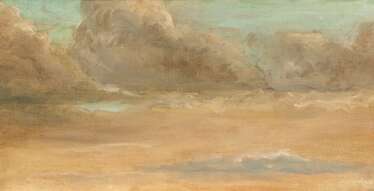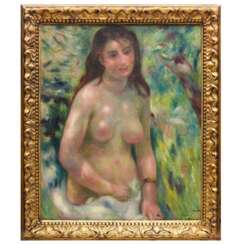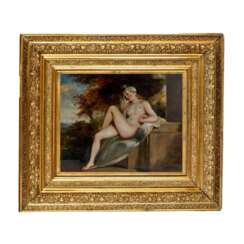картина приро




Walter Moras was a German landscape painter.
His favorite subject was provincial Germany: roads among the trees, rivers and streams, villages and mills. Moras is deservedly considered a master of winter landscapes. He was a realist painter, but he did not avoid some influence of impressionism in his works.


Kurt-Hermann Kühn is a German painter and graphic artist. He trained as a decorator and studied from 1946 to 1952 at the Academy of Graphic Arts and Printing in Leipzig and in Berlin at the Academy of Fine and Applied Arts.
Kurt-Hermann Kühn travelled to Syria and Egypt. These journeys are reflected in many of his paintings. In addition to his extensive painting and graphic work, he created many large-format murals, mainly frescoes. His portraits of women and erotic drawings have also attracted much critical attention.


Kurt-Hermann Kühn is a German painter and graphic artist. He trained as a decorator and studied from 1946 to 1952 at the Academy of Graphic Arts and Printing in Leipzig and in Berlin at the Academy of Fine and Applied Arts.
Kurt-Hermann Kühn travelled to Syria and Egypt. These journeys are reflected in many of his paintings. In addition to his extensive painting and graphic work, he created many large-format murals, mainly frescoes. His portraits of women and erotic drawings have also attracted much critical attention.


Stephan Kaluza is a multifaceted artist known for his work as a photographer, painter, and author. Living and working in Düsseldorf, Kaluza has developed a unique artistic voice that explores the intersections of natural philosophy, history, and the essence of human perception through both his visual art and literary works. His education in Düsseldorf during the 1990s, encompassing studies in photography, art history, and philosophy, has deeply influenced his creative output, allowing him to craft works that resonate on multiple levels with viewers and readers alike.
Stephan Kaluza's art often delves into themes of nature and creation, with his paintings ranging from hyperrealistic depictions to nearly abstract portrayals of forests and water surfaces. Notably, his work introduces disturbances into seemingly idyllic landscapes, revealing the layers of history and human impact hidden beneath the surface beauty of nature. This duality invites viewers to question the reality of what they see and to consider the deeper narratives that landscapes can hold, especially when those landscapes have served as backdrops to historical events or personal stories.
One of his most ambitious projects, the "Das Rheinprojekt," saw Stephan Kaluza undertaking an almost eight-month journey along the Rhine River. Documenting the river's right bank in over 21,000 photographs, he created a panoramic view that challenges traditional perspectives of landscape photography. This work, along with his "Das Mauerprojekt" and other photographic series, underscores Kaluza's commitment to capturing and conveying the complex relationship between humanity and the natural world.
Stephan Kaluza's contributions to the fields of art and literature have been recognized with awards such as the George-Konell-Preis of Wiesbaden and the Price of the Carl- und Ruth Lauterbach-Stiftung Dusseldorf. His works are held in both public and private collections worldwide, including the Portland Art Museum in Oregon, USA, and the Stadtmuseum Düsseldorf, Germany, highlighting his international appeal and the broad relevance of his themes.
For collectors and experts in art and antiques, Stephan Kaluza offers a profound engagement with the world through the lens of an artist deeply informed by a rich educational background and a keen sensitivity to the natural and cultural landscapes that shape our experiences. His work invites contemplation and dialogue, making his pieces valuable additions to any collection.
Stay updated on Stephan Kaluza's latest works, exhibitions, and publications by subscribing to newsletters from galleries and museums that feature his work. This subscription ensures access to new sales, auction events, and showcases related to Kaluza's evolving portfolio, offering insights into contemporary art and literature influenced by his unique perspective.


Stephan Kaluza is a multifaceted artist known for his work as a photographer, painter, and author. Living and working in Düsseldorf, Kaluza has developed a unique artistic voice that explores the intersections of natural philosophy, history, and the essence of human perception through both his visual art and literary works. His education in Düsseldorf during the 1990s, encompassing studies in photography, art history, and philosophy, has deeply influenced his creative output, allowing him to craft works that resonate on multiple levels with viewers and readers alike.
Stephan Kaluza's art often delves into themes of nature and creation, with his paintings ranging from hyperrealistic depictions to nearly abstract portrayals of forests and water surfaces. Notably, his work introduces disturbances into seemingly idyllic landscapes, revealing the layers of history and human impact hidden beneath the surface beauty of nature. This duality invites viewers to question the reality of what they see and to consider the deeper narratives that landscapes can hold, especially when those landscapes have served as backdrops to historical events or personal stories.
One of his most ambitious projects, the "Das Rheinprojekt," saw Stephan Kaluza undertaking an almost eight-month journey along the Rhine River. Documenting the river's right bank in over 21,000 photographs, he created a panoramic view that challenges traditional perspectives of landscape photography. This work, along with his "Das Mauerprojekt" and other photographic series, underscores Kaluza's commitment to capturing and conveying the complex relationship between humanity and the natural world.
Stephan Kaluza's contributions to the fields of art and literature have been recognized with awards such as the George-Konell-Preis of Wiesbaden and the Price of the Carl- und Ruth Lauterbach-Stiftung Dusseldorf. His works are held in both public and private collections worldwide, including the Portland Art Museum in Oregon, USA, and the Stadtmuseum Düsseldorf, Germany, highlighting his international appeal and the broad relevance of his themes.
For collectors and experts in art and antiques, Stephan Kaluza offers a profound engagement with the world through the lens of an artist deeply informed by a rich educational background and a keen sensitivity to the natural and cultural landscapes that shape our experiences. His work invites contemplation and dialogue, making his pieces valuable additions to any collection.
Stay updated on Stephan Kaluza's latest works, exhibitions, and publications by subscribing to newsletters from galleries and museums that feature his work. This subscription ensures access to new sales, auction events, and showcases related to Kaluza's evolving portfolio, offering insights into contemporary art and literature influenced by his unique perspective.

.jpg)
Ivan Ivanovich Shishkin (russian: Ива́н Ива́нович Ши́шкин), a Russian Artist, stood out in the 19th century for his mastery in landscape painting, immortalizing Russia's vast forests and nature through his precise and detailed work. His specialization in painting, coupled with a deep appreciation for his homeland's natural beauty, positioned him as a pivotal figure in Russian culture and art.
Shishkin's technique, characterized by its attention to detail and use of light, brought the Russian wilderness to life on canvas. His works, such as "Morning in a Pine Forest" and "The Rye Field," are celebrated for their realism and ability to evoke the spirit of Russia's landscapes. These paintings, held in prestigious museums like the Tretyakov Gallery in Moscow, serve not only as artistic achievements but also as cultural artifacts that offer insight into the Russian soul.
For art collectors and experts, Shishkin's oeuvre represents an intersection of artistic mastery and cultural heritage. His contributions to the world of painting continue to inspire and captivate audiences, making his works highly sought after in the realms of art collection and preservation.
We invite enthusiasts and connoisseurs to sign up for updates on new product sales and auction events related to Ivan Ivanovich Shishkin. This subscription is your gateway to owning a piece of Russian art history and staying informed about opportunities to acquire works by this illustrious painter.


Werner Scholz was a famous German-Austrian expressionist painter of the 20th century.


Werner Scholz was a famous German-Austrian expressionist painter of the 20th century.


Norbert Tadeusz was a German artist and well-known representational painter of the present day.

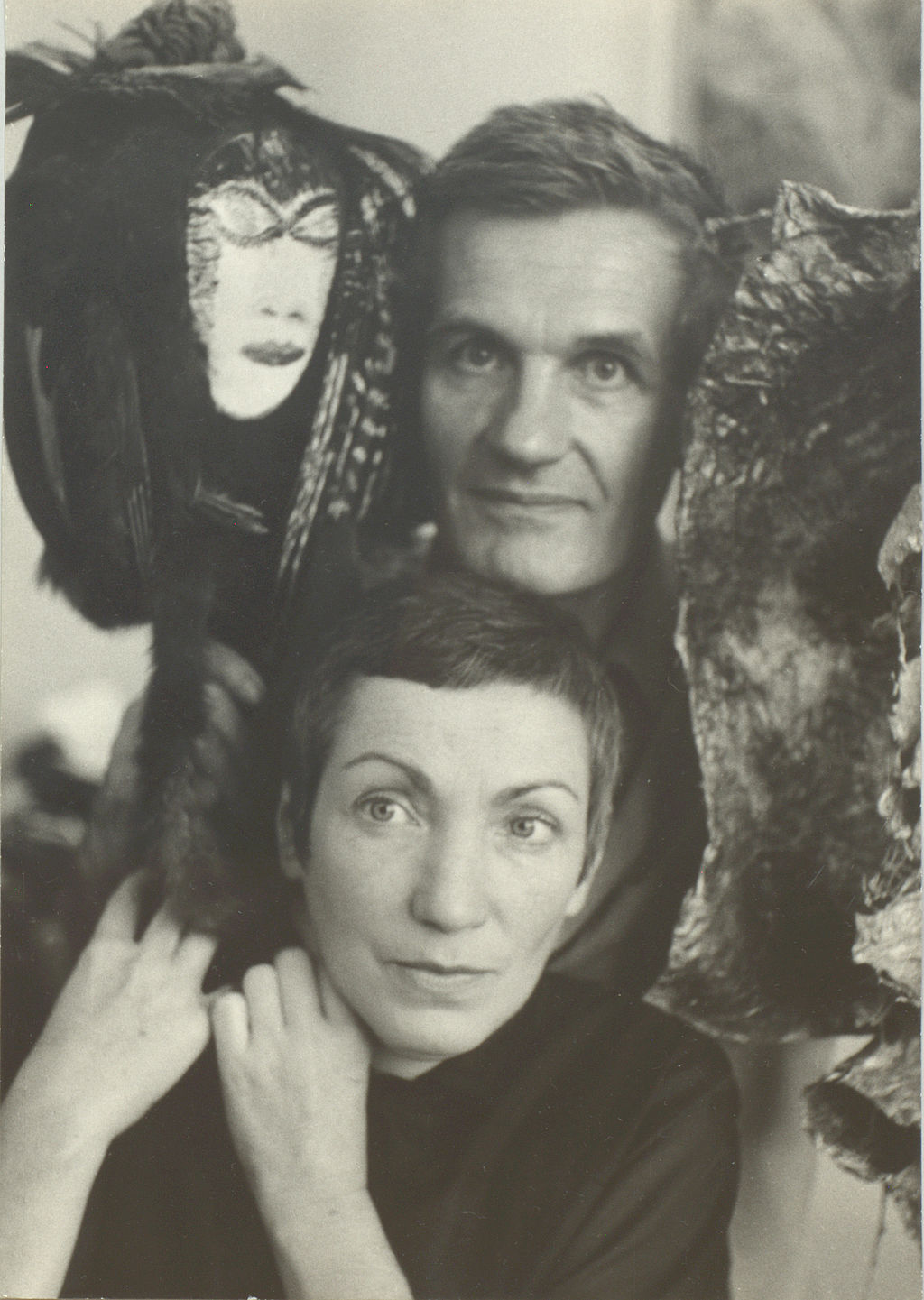
Ursula Schultze-Bluhm was a German painter.


Caspar Johann Nepomuk Scheuren is a German painter and illustrator.
After receiving an elementary art education from his painter father Egidius Scheuren, he studied landscape painting at the Düsseldorf Academy of Art, where he later became a professor.
Caspar Scheuren gradually developed an allegorical style of landscape painting, including motifs from stories and legends of the Rhine. He produced more than 300 oil paintings, 600 watercolors and 400 engravings.
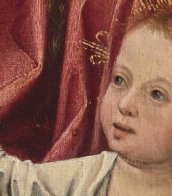

Oswald Achenbach was a German painter associated with the Düsseldorf school of painting. Though little known today, during his lifetime he was counted among the most important landscape painters of Europe. Through his teaching activities, he influenced the Kunstakademie Düsseldorf. His brother, Andreas Achenbach, who was twelve years older, was also among the most important German landscape painters of the 19th century. The two brothers were humorously called "the A and O of Landscapes" (a reference to their initials matching a common German reference to the Alpha and Omega).

![Жирар де Пропиак, К.Ж.Ф. Достопамятности в мире, или Описание существующих на Земле редких произведений природы и искуства [в 4 т.] / Изд. г. Пропиаком.; пер. с фр.; с картинами.](/assets/image/picture_1905685/02329/o74zmsiz-2cey4zu42nc3lptthxqyp3mad75g8vo2as0u-z9g-jtmzbhgunvsdw71639497058jpg__fix_374_244.jpeg)
![Жирар де Пропиак, К.Ж.Ф. Достопамятности в мире, или Описание существующих на Земле редких произведений природы и искуства [в 4 т.] / Изд. г. Пропиаком.; пер. с фр.; с картинами.](https://veryimportantlot.com/assets/image/picture_1905685/02329/o74zmsiz-2cey4zu42nc3lptthxqyp3mad75g8vo2as0u-z9g-jtmzbhgunvsdw71639497058jpg__fix_374_244.jpeg)


































